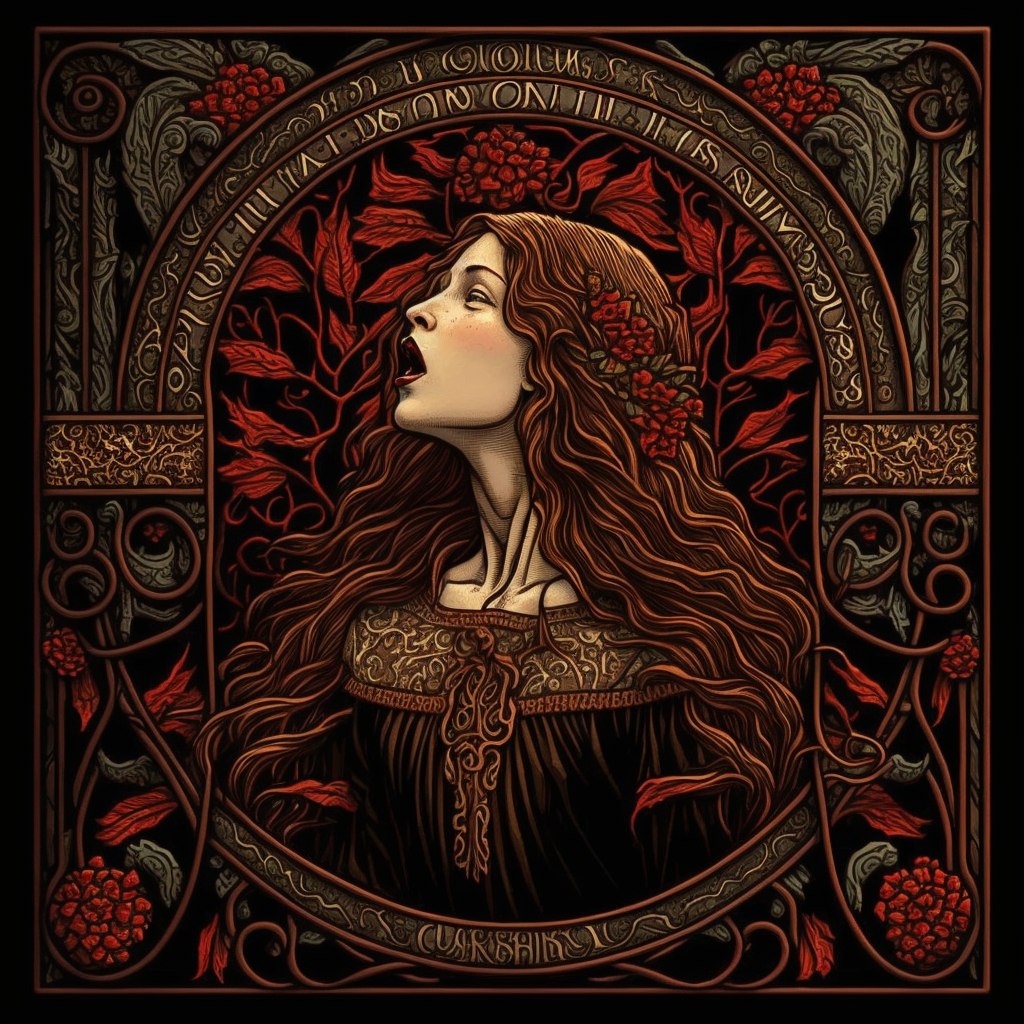Caoineadh na Neamhní
A somber rite of remembrance, primarily held on the 23rd of Frigus to commemorate and keep an oral history of the day the Blight fell, as well as any other day of significant loss to the individual or family. This melancholic expression is extremely private and sacred to the culture, and very few outsiders have ever heard the Lamentation to the Void.
History
Once an ancient tradition of the Seanachaisians in which they would sing the memories of those no longer among the living as a means of commemorating and immortalizing them, as well as an important method of oral tradition and record keeping often detailing lineages and important events in a family line through the lyrical content of the song. With the advent of the Blight and so many lost, the nature of the tradition slowly changed over time, as there were just so many lost and so many lines and families severed so quickly, that no one person could possibly remember them all. As a matter of desperate emotional wounding, and a cultural need for the loss of so many to mean something in a world that all too quickly seemed to move on driven by the mechanisms of war and struggles for power, the remaining survivors began to sing powerful dirges on important days of remembrance while facing in the direction of their lost home. The "Lamentations to the Void" are very private, and very culturally significant to the Seanachaisians, and the act was quickly adopted by and spread to what few communities remained in the years that followed the nightmarish event that nearly ended their species. The true power of the Caoineadh na Neamhní is that, due to the empathic nature of the Seanachisians and the immense emotional ties they retain to the act of expressing that cultural pain, is that, even among those who may not understand the words or purpose of the song, (as they are almost exclusively sung in their native tongue) the listener will more often than not find themselves reduced to the lowest depths of despair as the pain expressed washes of them.
Execution
These improvisational songs are usually entirely vocal performances, though at times items of cultural significance to the loss intended to be expressed, bones, coffins, pieces of heirlooms lost and broken, etc. will be used as punctuative percussion, keeping steady, simple rhythms. The vocal melodies are long, breathy, and utilize negative aural space in such a way as to trigger specific intervals of paused reflection and space for changes and builds in pitch and tempo. These songs keep a simple, yet moving flow that are subtly complex and subversive in their ability to move through a listener on an empathic level.
Components and tools
While the primary component of this rite is simply the voice of the one or ones expressing the song, often items of deep seated connection will be implemented as a means of percussion. These items are not limited to but can include: Bones of ancestors, heirlooms, parts or even entire coffins, instruments of significant importance, etc.
Participants
The Caoineadh na Neamhní is often performed alone, though it is not unheard of for others to gather, creating breathtaking harmonies as the improvisational work twists and moves. They are always performed facing the direction of the Island of Seanachai and can go for minutes to an hour or more depending on the performer and the state of their grief.
Observance
This tradition is a relative one. Rather than adhering to a specific day, each individual or family will observe the rite at a time that is important to them, something that demarks a significant loss, or sometimes just the memory of home itself for those that remember it. The only exception to this is the 23rd of Frigus, the anniversary of the day the Blight was brought down upon them. All Seanachaisians mark this day as a day of remembrance.
Primary Related Location
Important Locations
Related Organizations
Related Ethnicities





Comments